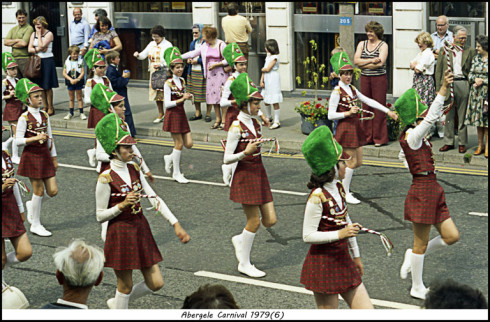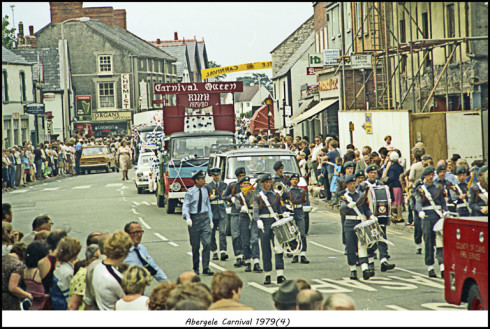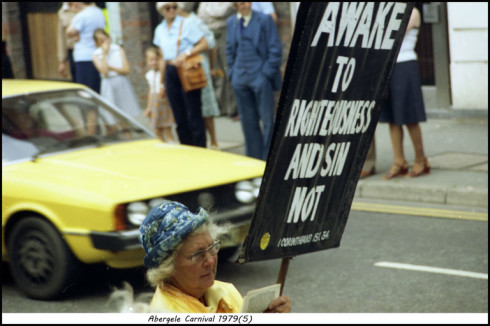Two Abergele Post readers – Doug Colter and John Michael Care – have been in touch with remarkable original accounts of the Kinmel Camp Riots (or Mutiny) of 1919. For background information you can read a BBC Wales account by Phil Carradice of the riot on the BBC Online website.
Doug Colter writes:
“My Grandfather John L. Colter(from Petrolia near London, Ontario, Canada) was born in 1898 and like most lads at the time was eager to sign up for action. So he enlisted on March 3, 1916 in London, Ontario, Canada.
“He trained in Camp Bordon, Ontario, then over to Britain for further training and preparation. He crossed the channel and traveled, and marched to Bourlon Wood in front of Cambrai, which was taken next day at a big price in men September 17, 1918.
“Fortunately (I suppose) he took a piece of shrapnel in his foot and had to find his way back on his own to a field hospital. That trip was quite the adventure as documented in his biography. From there, he eventually made his way to Mount Holly Convent, Tottington, to convalesce.
“Soon after the war was over and the long period of waiting to return to Canada had begun. This brought him to Kimmel Camp, where the famous riot took place.
“My grandfather kept a four volume diary from the time he enlisted to his return home. Most entries were very brief, and it would appear that it rained nearly every day while in the field in Europe. Can’t imagine what it must have been like before Gortex…

“From his extensive writings and recollections is the following:
‘… “But all things come to him who waits.” Waiting is the thing we do mostly in the Army. We left Whitby 5:30 a.m., March 3 and bypassed London to get to Kinmel Camp, Wales, about 9:00 p.m. It is exactly three years ago today (March 3, 1916) that I enlisted in the Army at Petrolia (Ontario, Canada).
‘Now followed a period of “On Draft”, “Off Draft”. But finally the “On Draft” won. We left Abergele about 10:00 a.m., March 3 for Liverpool and boarded the S.S. Regina about noon. About midnight we sailed away from dear old Blightly.
‘Now came a time of boredom and frustration. “You are on Sailing Draft; You are off Sailing Draft.” Others came into the Camp, were put on Sailing Draft and were away while you were still waiting. I am of the opinion that kind of treatment was the chief cause of the Riot of March 5th.
‘In the plans for demobilisation the men were put into camps according to the Military District to which they were going. London was (is?) Number 1 and Toronto, Number 2, and so across Canada. London and Toronto were adjacent camps and each said their camp was much better than the other. As I was in the London Camp, my ideas may be biased. I can tell only the London side.
‘I believe the trouble started in the Beer Canteen, over what or where, I do not know, but the taps were all opened and left running. If you had your mess tin with you it was a case of “All free, help yourself”. No harm in all that. But when the rioters starting burning the Orderly Rooms with all the records in them, that was different. No one could be sent home until copies of the records could be obtained from London, England.’’
‘The London Camp O.C. explained this to the men and placed an armed guard around the camp to keep everyone OUT. With or without orders, an Officer filled his pockets with live ammunition to give to these sentries (I was NOT one of them). Who fired the first shot? No one knows — “Mr. Nobody”, I guess. The rioters then broke into the arsenal and helped themselves to rifles and ammunition. I do not think any London men were in this crowd. They then dropped into trenches that had been made for training and shot for heads. The number of killed and hurt in this riot was a well-kept secret. Rumour placed the figures at: killed, 3 Officers, 14 men, and one man wounded. None of the London men were hurt. It is reported that London Orderly Room was the only one left intact.
‘Where was I? Sitting on the stone wall behind the hut ready to drop into the private property on the outside if the bullets started coming my way. None did so I went back into the hut when it was over.
‘Now followed a period of “On Draft”, “Off Draft”. But finally the “On Draft” won. We left Abergale about 10:00 a.m., March 3 for Liverpool and boarded the S.S. Regina about noon. About midnight we sailed away from dear old Blightly.
‘The “Regina” was a new ship – newly launched and not completed inside. We had to sleep in hammocks slung over the mess tables from the beams. They had to be taken down every morning, folded and piled against the wall. Sleeping in a hammock is not comfortable as you are doubled up until you are more sitting than lying. Their good point was that as the ship rolled, the hammock swung in the opposite direction so that you were horizontal at all times. No sea sickness. At night if it was rough the hammock rings creaked quite musically and you kept bumping the guys on each side. (The hammocks were slung lengthwise of the ship.)…’ “
That’s the end o John L. Colter‘s diary entry as related by Doug Colter.
I wanted to ask local historian Andrew Hesketh for his opinion of Doug’s grandfather’s story. He says: “Fascinating. It ties in with my understanding and certainly had a lot to do with Canadians being denied passage home (by the Canadian Gov’t and not the British incidentally), so relations between natives and colonials was somewhat tense. …Julian Putkowski (is) the only man to have written a serious account of the riots. However, this was some time ago and his chief source was newspaper accounts (which were affected by censorship) and the records of the inquiry which seemed motivated by a need to place the blame on a pseudo-bolshevik ringleader who was killed in the riot and is buried in Bodelwyddan. It was rather convenient to be anti-Bolshevik in 1919 and even more convenient that the target for blame was unavailable for questioning!”
Now here’s what John Michael Care wrote:
“The story I have came from my great uncle Philip Chambers, originally from West Bromwich but who had emigrated to Montreal, Canada and had volunteered for the Canadian Expeditionary Force from Montreal. His story of the riots was that he was sleeping on his bunk in the camp when a bullet came through the wall just missing him. As he said, he had survived the war and was one of only 12 of his regiment that survived the Somme and did not want to be killed on home soil. So he managed to sneak out of the camp in the chaos and make his way back to West Bromwich to stay with family, probably ours. There he waited until he heard that the government had arranged ships to take the Canadian troops home when he returned and sneaked back into the Camp in time to be shipped home. His story must have been equally difficult for his family as his brother died of typhoid in a camp in Northern France in 1919, also while waiting to be shipped back to Canada, and well after the end of hostilities.
My personal connection with Kinmel Bay was to attend a school CCF camp under canvass in the mid 1950’s long before I heard of the above story as I first met him in 1961 when I had a summer job in North America.”









